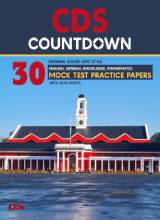How do pilot eject from the fighter jet?
Hello aspirants,
Recently we saw our IAF officer safely ejected from his aircraft, but it is being questioned as to will he be able to fly a fighter jet again? So, in this post, we will see what are the ramification after the ejection from the plane and how this affect our body.
So, let's begin
Does the first question arise what an eject seat is?
The answer to this question is simple In aircraft, an ejection seat or ejector seat is a system designed to rescue the pilot or other crew of a plane (usually military) in an emergency. In most designs, the seat is propelled out of the aircraft by an explosive charge or rocket motor, carrying the pilot with it. Once clear of the plane, the ejection seat deploys a parachute.
Why does a jet need an ejection seat?
The purpose of an ejection seat is pilot survival. Suppose, during a war, a plane is hit by the missile of enemy jet and is having a nose fall towards the ground, and the pilot needs to eject the jet asap! For this purpose, the seat is provided for the pilot and the crew members.
How to eject from a jet?
When a pilot pulls his ejection seat’s handle, which is located either between his legs or on one or both sides, depending on the cockpit arrangement, an electrical pulse signals thrusters to unlock the hatch, then rotate it up and out into the air stream. The seat is abled with oxygen supply and a parachute.
Now let's consider two situations
First when the ejection takes place at greater height suppose 50,000 ft. in this case where there’s not much oxygen The seat supplies supplemental oxygen, but because the pilot needs to get down to thicker air as rapidly as possible, the main chute doesn’t open right away. Instead, a smaller chute called a drogue deploys to stabilise the seat, so it doesn’t tumble and to slow the pilot’s horizontal velocity. The main parachute shoots up when the altitude is around 15,000ft.
In the second case when the ejection needs to be taken place at lower altitude pilot doesn’t need to free-fall, so the main parachute opens immediately, and the drogue stays in its case. All of the decisions based on speed, altitude, and the weight of the passenger are already made for the pilot before he even clears the aircraft.
Now the main question the need to be answered is what the repercussion on human health is?
The ejection seats punch you out of the plane with such acceleration that your body experiences 12–14 Gs. As per the laws of motion, you continue to move forward with high speed, but your head now feels the immense atmospheric pressure all of sudden as you are popped out of the cabin of the jet into the air which might compress your butt and fracture your spine. Not only this despite all safety gears and mask on the face there is the risk of injury to eyes and fracture of face bone and nosebleed, and bursting of eardrums might also occur.
So that’s all about the topic. I hope you aspirants enjoyed reading the article.
Stay connected with DDE for more.






 Order Now on Amazon
Order Now on Amazon
